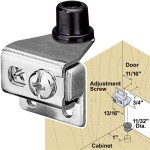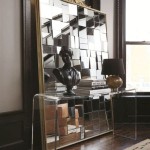Hanging Large Mirrors: A Comprehensive Guide
Large mirrors offer a dramatic way to enhance a room's aesthetic appeal and create an illusion of spaciousness. However, their size and weight present unique challenges when it comes to hanging them securely and safely. This guide provides a comprehensive overview of the process, covering essential aspects from evaluating wall type to selecting appropriate hanging hardware.
Assessing the Wall and Mirror
Before attempting to hang a large mirror, it's crucial to understand the wall's construction and the mirror's specifications. This assessment informs the selection of appropriate hanging hardware and ensures the safety and stability of the installation.
Key points to consider:
- Wall Type: Identify the wall material – drywall, plaster, concrete, or brick. Each requires a specific type of anchor or fastener.
- Stud Finding: Locate wall studs using a stud finder. Hanging heavy mirrors directly on studs provides the most secure support.
- Mirror Weight and Dimensions: Accurately measure the mirror's weight and dimensions to choose hardware with sufficient weight capacity.
- Mirror Backing: Examine the mirror's backing for pre-installed hanging hardware or suitable attachment points. Some mirrors might require additional framing or backing for secure installation.
Choosing the Right Hanging Hardware
Selecting appropriate hanging hardware is paramount for ensuring the mirror's stability and preventing accidents. The hardware must be rated to handle the mirror's weight and compatible with the wall type.
Key hardware options:
- D-Rings and Wire: A common method, D-rings are attached to the back of the mirror and connected with wire that hangs on wall hooks or screws. This method distributes the weight evenly.
- J-Hooks: J-hooks are screwed directly into the wall studs and offer robust support for heavy mirrors. They are often used with mirrors that have pre-installed hanging cleats or brackets.
- French Cleats: Consisting of two interlocking pieces of wood or metal, French cleats provide a strong and stable hanging system, especially for oversized mirrors. One cleat is attached to the wall, and the other to the back of the mirror.
- Mirror Mounting Clips: These clips grip the edges of the mirror and are secured to the wall. They are suitable for frameless mirrors and offer a minimalist look. Consider the weight limitations of these clips carefully.
- Heavy-Duty Wall Anchors: For walls that lack studs in the desired location, heavy-duty anchors such as toggle bolts or molly bolts are essential for providing secure attachment points.
Preparing for Installation
Proper preparation streamlines the installation process and minimizes the risk of errors. This includes accurately marking the desired location, gathering necessary tools, and ensuring a safe working environment.
Key preparation steps:
- Mark the Location: Use a level and measuring tape to mark the desired height and position of the mirror on the wall. Account for any framing or decorative elements.
- Gather Tools: Assemble all necessary tools, including a drill, screwdriver, level, measuring tape, pencil, and safety glasses.
- Prepare the Wall: Ensure the wall surface is clean and free of debris. If necessary, patch any holes or imperfections before hanging the mirror.
- Enlist Help: For very large or heavy mirrors, having an assistant is highly recommended for safety and ease of handling.
Installing the Mirror
The installation process varies depending on the chosen hanging hardware. Careful execution and attention to detail are crucial for achieving a secure and level installation.
Key installation considerations:
- Follow Manufacturer’s Instructions: Adhere to the specific instructions provided with the chosen hanging hardware for proper installation.
- Use Appropriate Fasteners: Select screws or anchors appropriate for the wall type and weight of the mirror.
- Double-Check Measurements: Verify all measurements before drilling holes or attaching hardware to ensure accurate placement.
- Ensure Level Placement: Use a level throughout the installation process to ensure the mirror hangs straight.
Post-Installation Checks
After installing the mirror, conduct thorough checks to ensure its stability and safety.
Key post-installation checks:
- Stability Test: Gently push on the mirror in different areas to confirm it is securely mounted and does not wobble.
- Visual Inspection: Inspect the hardware and surrounding wall for any signs of stress or damage.
- Regular Monitoring: Periodically check the mirror's stability, especially in areas prone to vibrations or movement.
By following these guidelines, individuals can confidently and safely hang large mirrors, enhancing their living spaces with both beauty and functionality.

How To Hang A Large Or Heavy Mirror

How To Hang A Heavy Mirror C R F T

How To Hang A Heavy Mirror Or Picture True Value
How To Hang A 100 Pound Mirror On Drywall Quora

How To Hang A Heavy Mirror

How To Hang A Heavy Mirror

How To Hang A Heavy Mirror With Pictures Wikihow

How To Hang A Heavy Mirror In 5 Simple Steps

How To Hang A Heavy Mirror Diy Family Handyman

Full Length Mirror Door Hanging Wall With Rectangular Float Framed Explosion Proof Mounted Make Up Vanity For Bedroom Entryway 50 X 14 Gold Com








